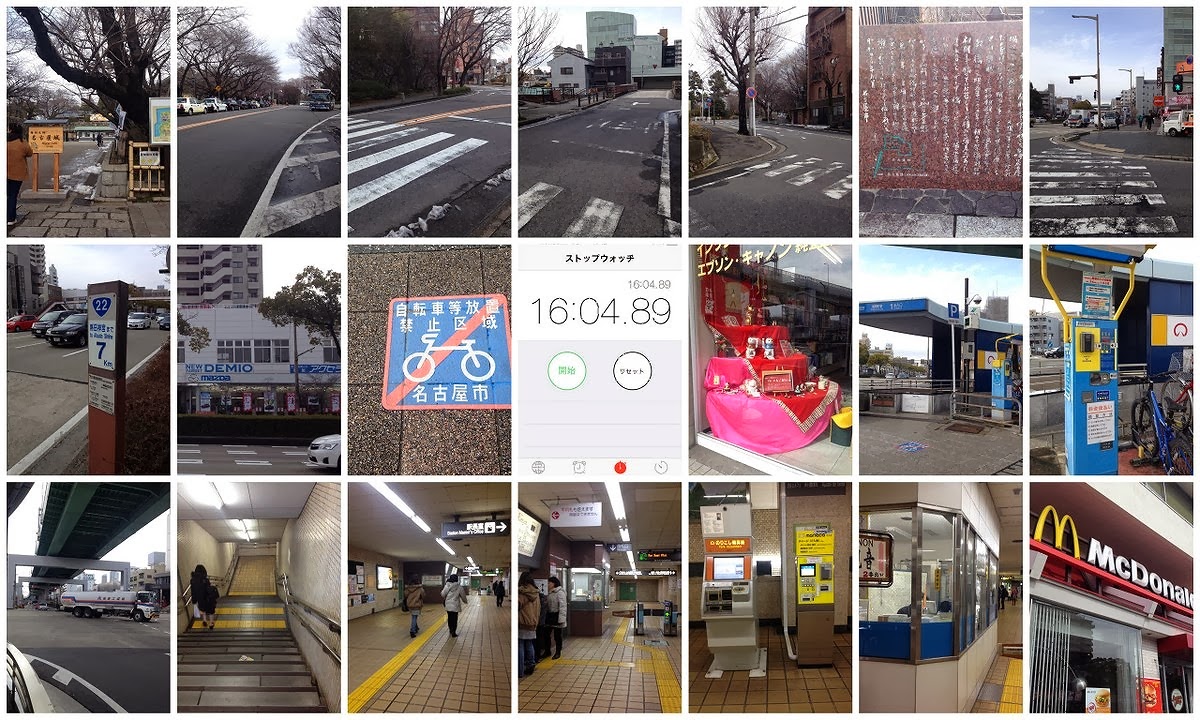Sunday, February 16, 2014
Checking the requested route on foot
Ahead of the tour for a group of 40 businessmen from India on February 24th, I walked the new route to another subway station from the front gate Nagoya Castle to find out how long it will take me to complete it. We have to make the itinerary for that tour.
I set my iPhone stopwatch and started walking the new route. It took approximately 16 minutes to get to the subway ticket gate downstairs. Also I found some interesting spots on the way which the guests might get interested in.
A lot of preparation are necessary.
Friday, February 14, 2014
Happy Valetine's day from snow-covered Japan
It's snow again. This time it has been snowing at a wide area in Japan through the Pacific coast of eastern to the western Japan. In Tokyo it's snowing much heavier than here in Nagoya.
The thing is that once it snows in big cities where snow rarely falls, the transportation gets paralyzed and people have to be patient for the inconvenience.
Staying home is the best choice on such a day------but not quite true for me. I have to clear snow from the walkway before it gets dark in the evening.
What a nice way to celebrate a Valentine's Day!
"Happy Valentine's day to everyone.
Greetings from snow-covered Nagoya, Japan!"
Thursday, February 13, 2014
Nagoya Hideyoshi Kiyomasa Memorial Museum
Today I visited Nakamura ward in Nagoya, the homeland of two outstanding samurai in our history, Toyotomi Hideyoshi and his younger relative, Kato Kiyomasa.
I take a great pride that Hideyoshi and Kiyomasa came from this area of poor farmers in those days.
We have a small but very good museum in honor of these two important warriors from Nakamura ward, who lived almost 400 years ago.
Of all the items here, such as hanging scrolls of paintings, letters, armours, helmets and many other important belongings, especially I got interested int two “helmets.” A helmet is “kabuto” in Japanese.
Hideyoshi’s “kabuto" is so elegant and decorative. It is made of many plates of steel. They say that long sword-like plates depict leaves of iris flowers.
Another “kabuto” belonged to Kato Kiyomasa. Its shape is unusually long compared with what we know as “kabuto” in general.
The length is not practical when considering that “kabuto” should protect a warrior from arrows, spears, swords and guns.
On Kiyomasa’ “kabuto”, pieces of lacquered paper are attached in layers. The family crests are designed with leaves of gold. When complete, it didn’t weigh much.
Why then did he put on an unpractical “kabuto”?
It is said that Kiyomasa liked the idea that the eye-catching "kabuto" of a successful warrior ensured that his fighting with an enemy soldier was noticed in battle.
That way a warrior could get a reward from his master such as his title or his own territory.
For a top warlord such as Hideyoshi, the showy “kabuto” along with a suit of armour added more significance for dignity and power to his followers.
Even foot soldiers in the troop could tell where their master was in a battlefield and could crowd around him in case of danger.
Later, when the whole society got more peaceful in Edo period, the samurai class preferred to maintain their military armour as their family symbols.
Due to skillful craftsmanship of those days, Japanese “kabuto” and armour have become art objects not only for Japanese but also many collectors from abroad.
Subscribe to:
Comments (Atom)




